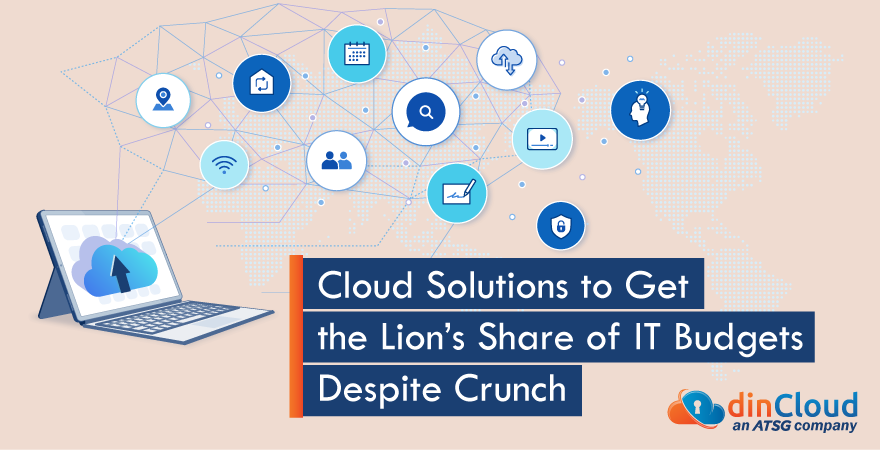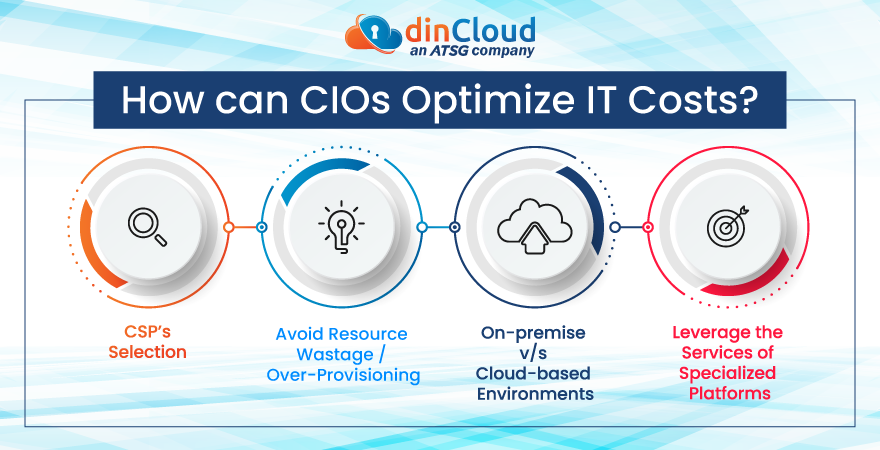The power and influence of digital transformation is clearly reflected in enterprise spending patterns. Numerous Chief Information Officers (CIOs) have admitted that with the looming economic uncertainties, they do face immense pressure to decrease investments on a lot of business fronts. Despite that, they do not foresee similar budgetary cuts on tech investments, particularly the ones related to Cloud Computing technologies.
Cloud Computing is much more than just a corporate buzzword. Today, it has become a critical enabler for businesses to survive and thrive in cut-throat competition.

According to a Gartner report, the market value for Cloud consulting, implementation and Cloud-managed services is expected to reach a whopping US $255 billion in 2022. The report further predicted that the largest growth in investment would be seen in data center systems.
Strategic Guidelines for CIOs to Lead the Digital Age
Tech leaders must take the lead to identify objectives and define a roadmap to opt for a Cloud-based IT infrastructure. It is vital for businesses to develop clarity about their overall business structure. They should list all the applications they are currently utilizing, along with their purpose. This is particularly important when enterprises are shifting their workloads to the Cloud.
Traditionally, CIOs and key IT professionals had to allocate huge budgets to maintain and upgrade their on-premise IT infrastructures. This included hardware, utility expenses, rental costs of all the IT hardware, cooling etc. With Cloud-based investments, CIOs can re-allocate this budget to back-up such programs that support their strategic business objectives.
The CEO of a successful Digital Platform Conductor (DPC) company, Paul Deur, sees a shift in how organizations conduct business these days. He said that despite the fear of a recession, a lot of investment is being injected in Cloud Computing technologies.
How can CIOs Optimize IT Costs?
The entire world faced some form of disruption due to the Covid-19 pandemic, and businesses were no exception. From a CIO’s point of view, it was like driving a car at midnight, with dim headlights, and barely any clarity about the road ahead. With such a high level of uncertainty, it was important for CIOs to come up with an action plan to effectively manage their IT spending.

CIOs should not let the overall cost of Cloud migration spiral out of control, and need to invest wisely in CSPs. In this post, we have also listed the ways through which enterprises can optimize their IT infrastructure costs.
1. CSP’s Selection
Enterprises should opt for Cloud Service Providers (CSP), like dinCloud, which offer transparent pricing models, with absolutely no hidden costs, migration or data transfer fees. Sometimes, these hidden charges and multiple overheads can cost enterprises a fortune. This is why businesses should choose CSPs after significant due diligence.
2. Avoid Resource Wastage / Over-Provisioning
CIOs should also have access to such tools and technologies that can help them gauge and monitor their un-used resources. They should make sure that these extra resources are removed from their Cloud balance sheet, as the cloud offers instant scalability, in case any further need for resources arises in the future.
Sounil Yu, Chief Information Security Officer (CISO) of JupiterOne suggested that enterprise IT teams should closely monitor these resources, and scale them down when they become idle. They should also use automation to re-provision them, as and when needed. This will improve their overall resilience, as well as efficiency.
3. On-premise v/s Cloud-based Environments
The Chief Commercial Officer at Aryaka, Dennis Monner said that Cloud-based investments are at all-time highs. He said that the first thing enterprises should do is compare the actual cost of deploying Cloud-based solutions, with in-house solutions.
On-premise solutions come with their fair share of risks and overhead expenses, so a detailed cost evaluation, beforehand, can help them have some clarity.
4. Leverage the Services of Specialized Platforms
Dennis Monner also said that enterprises should leverage the services of such firms that specialize in the optimization of Cloud costs.
The concept of cost reduction in businesses is as old as business itself. This is why organizations use tools like Digital Platform Conductor (DPC), which are used to decrease the overall cost and the associated challenges during Cloud adoptions. DPC tools help enterprises gather and analyze information from all stakeholders, across their IT environments.
Their main purpose is to determine if an enterprise is prepared enough to go through such a huge undertaking. If the answer is yes, then DPC tools use Artificial Intelligence (AI), Machine Learning (ML) and Intelligent automations to help define the rules and regulations that are necessary to successfully implement this change.
Tech Investments Must be Tactful
Investments in Cloud Computing technologies have become a top priority for multiple businesses, primarily for the following reasons.
- Cloud-based solutions are flexible and scalable.
- There are no stranded investments.
- Enterprises do not have to procure in-house IT hardware and numerous software.
- Enterprises do not have to train their employees about the maintenance and upgrades of their Cloud-based infrastructure. CSPs take care of all this.
That being said, it is important for businesses to develop an in-depth strategic plan, and undergo an objective internal audit to determine which applications and workloads should be migrated to the Cloud. They should also tactfully manage their Cloud environments and use Cloud-based automations to ensure they are not paying for un-used or under-utilized resources.
Conclusion
With the ongoing economic fallout of the global pandemic, businesses’ overall budgets have come under strict scrutiny. Yet, Chief Information Officers (CIOs) are accelerating their IT spending, as they look towards the future.
That being said, enterprises should still implement regular assessments and effectively manage their Cloud environments to stick to their IT budgets. They should also engage those Cloud Service Providers (CSPs), like dinCloud, which offer transparent / flat rate pricing models.
With dinCloud’s robust Cloud Computing services and solutions, you do not have to worry about any un-welcome surprises, especially in the form of additional hidden costs. The instant scalability of our cloud solutions allows users to seamlessly spin up their virtualized IT assets, as per their requirements.


